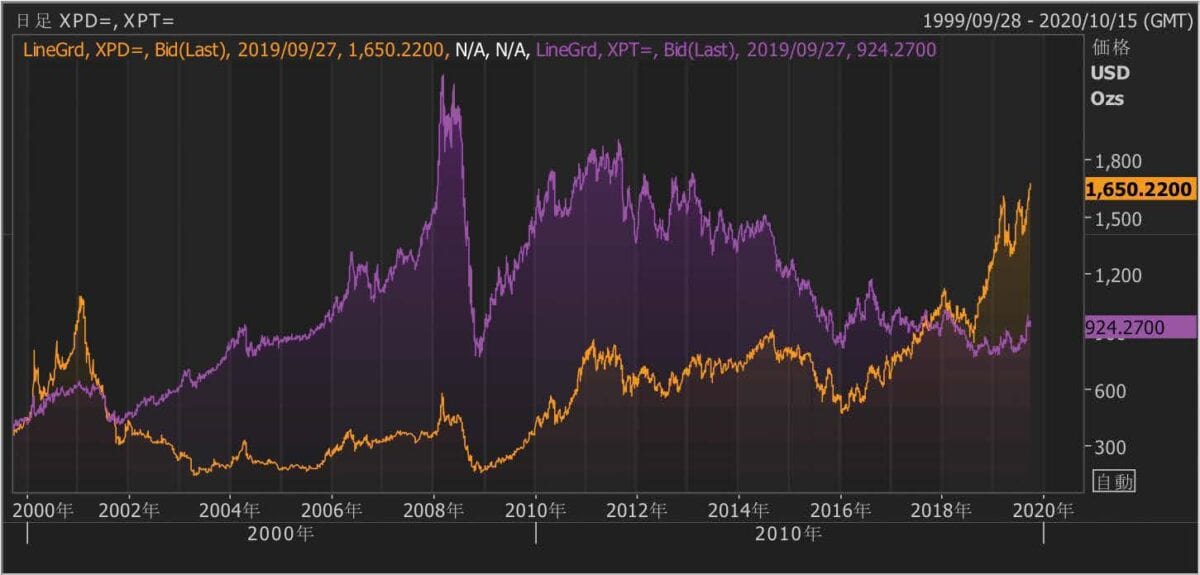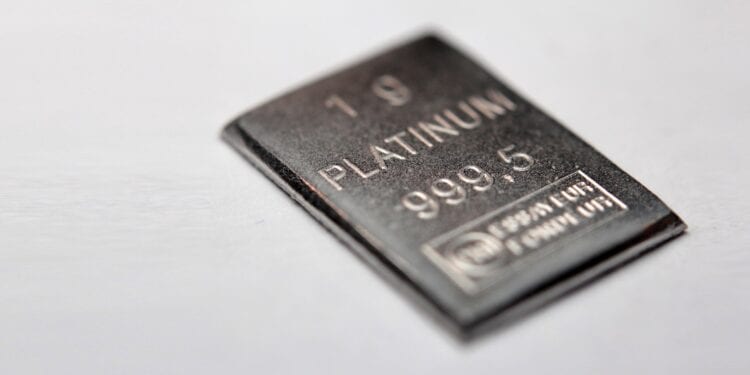Platinum and palladium have had very contrasting price movements in the past several years. In September 2017, the value of palladium surpassed that of platinum for the first time since 2000, when the Tocom Pd crisis hit the market. What was, and is, happening with these two metals and where will their futures lie? I will try to explain the past, analyze the present, and then try to predict what is going to happen in the foreseeable future.
Not less than five years ago when palladium’s value was still half of platinum’s, I had predicted that the palladium price would catch up with platinum in the near future. The reason for me was quite obvious; the very basic fundamentals of supply and demand. If you look at the supply and demand numbers for the past 10 years, it has always been quite obvious that palladium autocatalyst demand, which occupies more than 80% of total demand, was increasing at a far greater pace than that of platinum (33% of total demand). According to the 2019 GFMS PGM Survey, in 2010 auto-catalyst demand for palladium was 165 tonnes and for platinum 94 tonnes. In 2018, platinum still stayed around 101 tonnes, less than a 1% increase from 2010, while palladium’s catalyst demand experienced a sharp increase at 268 tonnes – almost 62% more than 2010.
Looking at the total supply, both metals are quite steady – platinum around 250 tonnes and palladium between 250-280 tonnes every year. There were not big swings. There are some differences between platinum and palladium supply that we should take note of here. First, 90% of platinum is produced by South Africa and the broader region(mainly Zimbabwe), while a large mining supply of palladium comes from Russia (29%) and South Africa (27%). Second, while platinum comes from platinum mines in South Africa, palladium does not come from palladium mines. Palladium mine supply is a by-product from nickel mines in Russia and platinum mines in South Africa. This means that platinum mining supply can be controlled as a main product, but palladium production must largely depend on the nickel or platinum market situation. Palladium production cannot be sharply increased even if the price increases.
So why did the demand for palladium in the autocatalyst industry increase so rapidly over the past 10 years? Simply because palladium was much cheaper than platinum. The capacity of palladium as a catalyst is not as good as that of platinum, but it can handle internal combustion engine exhaust gas, and is much cheaper than platinum, so it is most car makers’ and catalyst makers’ choice.
However, diesel engine exhaust gas cannot be handled by palladium and so manufacturers have to choose platinum. Regardless, gasoline engine cars make up the majority of car sales in the world.
This trend continues, and at the end of September, we saw the price of palladium reaching historical highs of near USD 1700. Platinum had been depressed to around as low as USD 800 for the past two years but rose above USD 900 in August this year.
Over the past few years, next generation cars like electric vehicles (EVs) and fuel cell vehicles (FCVs) have been widely pushed, resulting in media reports claiming that the switch from combustion engines will happen soon. From my point of view, that may be a little optimistic.China, by far the most aggressive EV-pushing country, is now seeing a rapid slowdown of EV sales. China’s government reduced its EV subsidies in July with a view to abolish them in 2020, and is also relaxing its limitations on combustion engine cars to prevent economic slowdown. Other countries such as the UK have also been cutting their government subsidies, while the USA has been charging EV-drivers higher registration fees to cover infrastructure maintenance costs (usually covered by the purchase of gasoline). It seems that EVs, with their limited cruising distance and battery charging time, will struggle to compete with combustion engines which have been optimized over the past 100 years.
As a result, palladium will still maintain its favorable position. Of course, we will see ups and downs, but taking into account the current car market situation, the only way for palladium is up. I would not be surprised if it reaches USD 2000 towards the end of the year. Platinum, meanwhile, holds a very heavy shadow over the market, but I feel the atmospheres are changing. With platinum now at around USD 930, market sentiment is that we have already seen its lows. Platinum ETFs are increasing its balance rapidly. Investors are getting into platinum, as it is cheap compared to palladium and gold. The intrinsic value of platinum, including its rarity, industrial application demand, and jewelry demand, is far higher than that of either gold or palladium. The current situation of platinum being traded for much less money than palladium and gold is simply due to demand from gasoline engine catalysts for palladium and overwhelming investor interest in gold. I believe it may take years, but if these situations change, the price of platinum will return to former levels.
During his visit at the United Nations, Shinzo Abe, Japan’s Prime Minister, mentioned Japan’s policy toward the next generation vehicle. He said the government hoped to use 100% renewable energy to create hydrogen in Fukushima. He also stated that the government would make a strong effort to promote FCV as a first choice after the current gasoline and diesel engines. An FCV uses almost 10 times more platinum within a catalyst than a diesel engine.
At present, platinum has a problem as there’s less demand for jewelry and a weaker South African rand, but if investors buy more gold, then the shift in gold price would most likely support platinum. I estimate that platinum will be trading between USD 860-1050 for the rest of the year, likely closer to the higher end of that scale. With palladium, we can’t see the ceiling, and with platinum, there’s a problem with it being undervalued, however both have a good chance of increased success.












